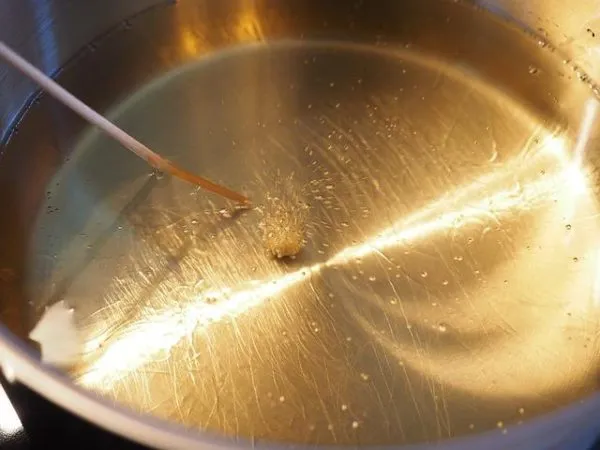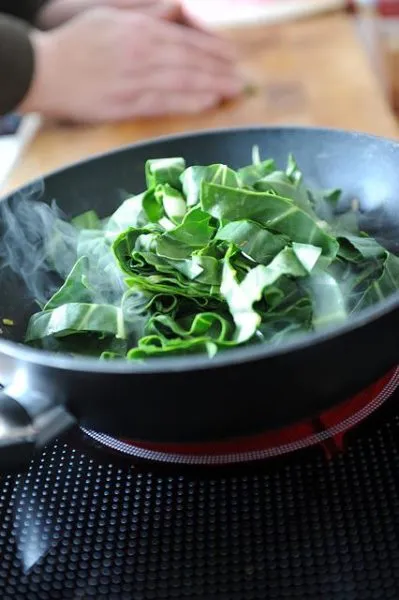If you’re looking for an authentic Haitian dish to spice up your taste buds, look no further than Haitian food lalo. This spicy, rich stew is perfect for warming up on a cold day, and the unique flavor will leave you wanting more. While there are many variations, all versions will surely surprise you.
What is Haitian food Lalo?
Lalo is the Haitian name for “jute leaves.” These very nutritious leaves contain lots of antioxidants, vitamins, and minerals. The Latibonit people of Haiti love Lalo-based meals. It is their signature Haitian cuisine. However, people from other departments in Haiti also love to prepare and eat lalo. They might make it differently, but the basic ingredients remain the same.
To try this specialty dish, you should shop for your jute leaves directly from a Haitian supplier or Asian marketplace to purchase it. They provide the most authentic jute leaves that taste like the real leaves you would have in Haiti. The name on the packaging might state something like “Molokhia” or “Frozen Green Molokhia.” If your local store does not carry it, you can try searching for it online on Amazon or your favorite store on the web. Just be sure you read the reviews before you purchase, though.
What are Jute Leaves?
Lalo or Jute leaves are the jute plant’s leaves native to South Asia. They are also known as lalo Haitian and are a popular leafy vegetable in Haiti and other parts of Africa. They taste slightly bitter and are often cooked in stews or prepared like spinach. These leaves are a common ingredient in Caribbean cuisine and can be used to jazz up soups, sauces, and other dishes.
Most people are not familiar with this plant, also known as Corchorus olitorius, saluyot, ewedu, or of course, Lalo in Haiti. However, the plant is well recognized throughout Asia, Africa, and the Middle East.
The Caribbean dish known as callaloo stew is not the same as lalo. Amaranthus Viridi is the scientific name for the leaves used in Jamaican and Caribbean Callaloo preparation. Jamaican callaloo has a flavor that is more robust than that of spinach but is comparable to that of jute leaves.
Health Benefits of Haitian Lalo
They are an excellent source of vitamins and minerals, including vitamin C, beta-carotene, magnesium, potassium, and iron. They also contain high levels of fiber and antioxidants. They have been shown to improve digestion, lower cholesterol levels, and boost immunity. Some claim they may help protect against cancer and other chronic diseases.
Serving Suggestions
The Haitian food lalo dish is a mouthwatering dish traditionally eaten with white rice. It is a well-known meal in Haiti and is frequently prepared for celebrations and other important events. Lalo can be prepared with any kind of meat or seafood, such as blue crabs. Place a portion of the lalo on top of the rice, then dig in with your spoon!
Haitian lalo is a recipe that is made with peppers and spinach. Add the peppers, jute leaves, and garlic to the pot and stir. Then add tomato paste, epis, bouillon, and lemon juice. You cook the lalo for 2 minutes and then taste it. If it needs more salt, you add it. The lalo is a savory vegetable dish that is very flavorful. It is a tasty, healthy dish in the Caribbean.
Recipe for lalo with beef and crab meats
The main ingredients of this recipe are lalo, beef, and blue crabs.
4 cups dried jute or lalo leaves
One sprinkle of baking soda
8 cups water
12 oz. baby spinach or normal spinach (cleaned and chopped)
2 lbs stew meat
One lime or lemon for cleaning the meat
Three garlic cloves, finely chopped
One small white onion, diced
one thyme sprig
Two finely chopped scallions
2 tbsp finely chopped parsley
12 oz lime juice
12 teaspoons of salt
black pepper
1/8 teaspoon clove powder
One tablespoon cube of chicken or beef bouillon
Two teaspoons of olive oil
two tbsp tomato paste
12 teaspoons spicy sauce or 12 teaspoons hot pepper
Remove any dead leaves and dried lalo from the package.
In a large mixing bowl, combine water and baking soda. Allow soaking for 30 minutes.
To marinate beef:
- Please place the beef in a basin and clean it with lemon or vinegar.
- Rinse thoroughly with cool water and pat dry.
- Allow lemon or lime juice, garlic, onion, thyme, scallions, parsley, salt, black pepper, ground cloves, chicken bouillon, or beef bouillon to marinate for at least 30 minutes in a clean bowl.
Set aside after straining the lalo, rinsing many times, and discarding water.
Heat the oil in a heavy bottom pan and add the tomato paste.

Fry for 1 to 2 minutes.
Stir in the steak and marinade to combine.
Add spicy peppers or hot sauce to your liking.
Reduce the heat.
Cover the meat with Lalo or Jute leaves.
Mix in the spinach.

Wrap in aluminum foil.
Cook, covered with a fitting lid, for 40 to 55 minutes, or until beef is well cooked.
Remove the aluminum foil and add the clean blue crabs to the mixture, stirring to combine.
Cook for 15 to 20 minutes, or until the crabs are done.
Remove from the heat, and serve immediately over rice or root vegetables.
Haitian cuisine is a unique mix of flavors and dishes that often surprises people who try it for the first time. Yesterday, I had lalo with beef at my favorite Haitian restaurant near me in New York. This dish comprises a variety of leaves that are boiled until they are soft, then mixed with other ingredients.
One interesting ingredient in this dish was lalo, made with jute leaves soaked in water to remove the bitterness. The result is a slimy but delicious mixture that can be eaten with rice or other meals.
Haitian food lalo is a delicious and unique vegetable that you should try. Its origins can be traced back to Haiti, where it is used in many traditional dishes. You can prepare Haitian lalo in several ways, but we recommend following our tips for the best results. If you’re looking for some new and exciting recipes to try, we’ve got a few suggestions for you in our Haitian cuisine category. Thanks for reading, and bon appetit!



